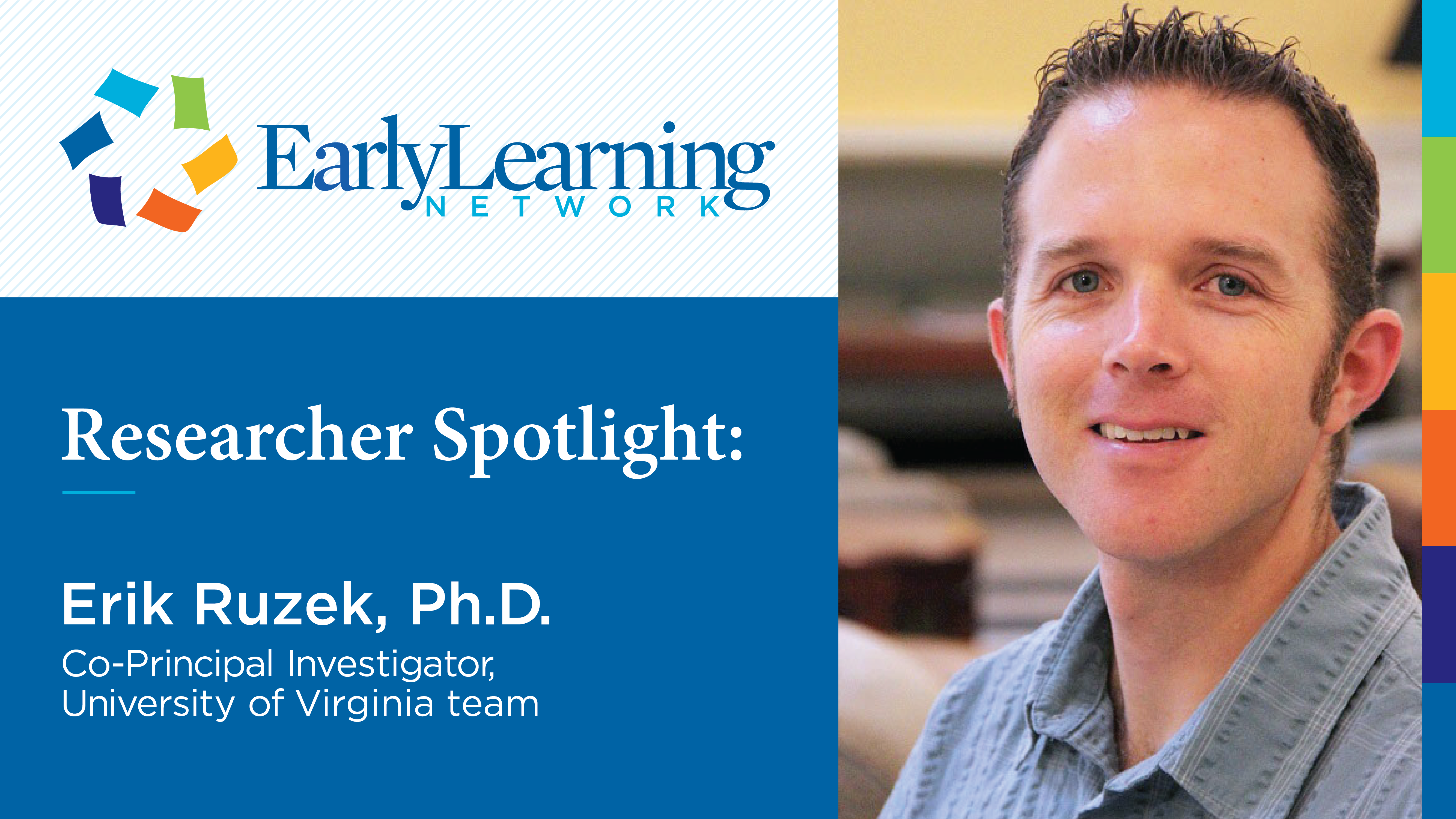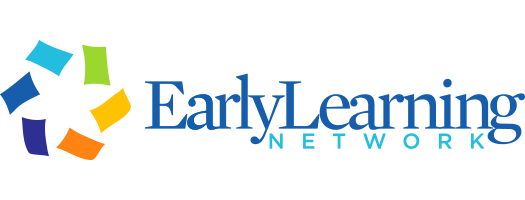
01 Oct Researcher Spotlight: Erik Ruzek, University of Virginia
Q&A with Erik Ruzek
Co-Principal Investigator, University of Virginia
Research Assistant Professor, Center for Advanced Study of Teaching and Learning,
Curry School of Education
The University of Virginia’s Erik Ruzek shares his perspective on the Early Learning Network’s research program, Fairfax Pre-Kindergarten to 3rd Grade, which examines educational practices and policies in one of the country’s fastest-growing and most diverse regions.
Ruzek is particularly focused on increasing our understanding of how children’s perceptions and motivations affect their learning and ongoing academic success.
Read the full Q & A below.
What is your role in the Early Learning Network?
I am a co-principal investigator on UVA’s Fairfax Pre-Kindergarten to 3rd Grade (FP-3) project. Working alongside a team of experienced early childhood experts, my primary role is focused on methodological and analytical decisions and efforts. My substantive interests are in students’ perceived experiences in school and their motivations.
I have led efforts to develop a new instrument to assess young children’s academic orientations, including their growth mindset, perceived academic competence, school enjoyment, and perceptions of teacher and peer relationships.
The UVA team collected this data through interviews when the children were in pre-K, and our psychometric evaluation of this pre-K data was recently accepted for publication in Early Childhood Research Quarterly. We’re excited to be part of the journal’s special issue on children’s learning perceptions, due to be released in early 2019.
What makes you most excited about the Early Learning Network?
It’s very exciting to be part of a group of incredibly smart, dedicated and experienced scholars working across multiple locations to better understand the importance and impact of children’s early learning. The efforts across these different research teams and sites, collectively considered, will advance our understanding of children’s experiences in pre-K and the early grades with great potential to contribute to policy and practice.
What strengths or distinctive attributes does the UVA team bring to the Early Learning Network?
The FP-3 project takes place in one of the largest school districts in the U.S., which serves an incredibly diverse group of children and families. The students in our study come from linguistically diverse households with 53 percent speaking a home language other than English.
Last year, we were collecting data on 2,500 children in 450 kindergarten classrooms. We will continue to follow these children for the next three years. That’s a lot of data.
To this context, we are focused on identifying holes in our knowledge about children’s academic and social experiences in classrooms. This leads us to pursue ideas and invent measures that can help us better understand the early schooling experience.
What challenges have you encountered thus far in your project?
The size and scope of this project present a constant challenge. For example, how do we get into 450 classrooms in a three-month window? Can we possibly add another direct child assessment measure when we have a limited amount of time to assess 2,500 children? These are the types of questions we ask ourselves at many of our project meetings.
We are fortunate to have incredible staff who carry out much of the day-to-day work, and who almost never say no to us when we want to try something new, different or what some might call crazy!
What are you most looking forward to in the coming months?
I am excited about two things. First, we are undertaking significant work to improve the academic orientations instrument after analyzing the pre-K data and administering it again in kindergarten. We are just beginning to analyze the new kindergarten data. Based on these results, I look forward to developing and strengthening the measure further so we can use it to study children’s academic orientations over time.
Second, I am exploring methods for analyzing child outcome data longitudinally that will enable our team to estimate a classroom’s unique influence on children’s learning and development in the year they were in that classroom, as well as that classroom’s residual influence in subsequent years.

